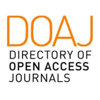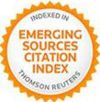Machine learning and landscape quality. Representing visual information using deep learning-based image segmentation from street view photos 
Abstract
The study is centered on the value of visual perception in the measurement of landscape quality. The research aims to define a digital methodological process and criterion for assessing the quality of a landscape, using along a road georeferenced image as open source big data. Artificial intelligence system, trained to recognize and quantify the elements present, processes these images associating area data, therefore converted them into values according to specific criteria. In each image, it evaluates positive or negative characteristics of the path, and the sum of all big data values generates an index (L-value). This approach is tested in different case studies, validating AI results with Collective Intelligence, using anonymous questionnaires. The proposed process transforms the perceptual data inherent in the photographs into information, from which it extrapolates a knowledge path synthesized in map, representation of perceived qualities of the landscape.
Keywords
Full Text:
PDFDOI: http://dx.doi.org/10.2423/i22394303v13n1p117
References
Alivand, M., & Hochmair, H. (2013). Extracting scenic routes from VGI data sources. In GEOCROWD 2013 - Proceedings of the 2nd ACM SIGSPATIAL International Workshop on Crowdsourced and Volunteered Geographic Information (pp. 23–30). Association for Computing Machinery. https://doi.org/10.1145/2534732.2534743
Arnheim, R. (1954). Art and Visual Perception: A Psychology of the Creative Eye. Berkeley: University of California Press.
Badland, H., & Pearce, J. (2019). Liveable for whom? Prospects of urban liveability to address health inequities. Social Science and Medicine, 232, 94–105. https://doi.org/10.1016/j.socscimed.2019.05.001
Bianchi, A., D’Uva, D., & Rolando, A. (2020). An innovational digital tool in GIS procedure: Mapping adriatic coast in abruzzo region to support design of slow mobility routes. International Archives of the Photogrammetry, Remote Sensing and Spatial Information Sciences - ISPRS Archives, 43(B4), 533–537. https://doi.org/10.5194/isprs-archives-XLIII-B4-2020-533-2020
Bianchi, A., D’Uva, D., & Rolando, A. (2020). A View from the Track: Measuring Spatial Quality of Slow Mobility Routes. Possible Integration of GIS and Machine Learning Based Methods. In CONNETTERE CONNECTING un disegno per annodare e tessere/drawing for weaving relationships (pp. 2973–2980). Reggio Calabria.
Bianconi, F., & Filippucci, M. (2019). Landscape Lab. Drawing, Perception and Design for the Next Landscape Models (Vol. 20). Basingstoke: Springer.
Bianconi, F., Filippucci, M., Ceccaroni, S., & Seccaroni, M. (2022). The value of deep learning for landscape representation comparison between segmentation images map and GIS. International archives of the photogrammetry, remote sensing and spatial information sciences, XLIII-B4-2(4–2022), 487–492. https://doi.org/10.5194/isprs-archives-XLIII-B4-2022-487-2022
Bianconi, F., Filippucci, M., & Cornacchini, F. (2020). Play and transform the city. SCIRES-IT - SCIentific RESearch and Information Technology, 10(2), 141–158. https://doi.org/10.2423/i22394303v10n2p141
Bibri, S. E., Tao, Y., Wang, Y., Wang, X., Tian, G., & Zhang, S. (2022). Measuring the Correlation between Human Activity Density and Streetscape Perceptions: An Analysis Based on Baidu Street View Images in Zhengzhou, China. Land 11(3), 400. https://doi.org/10.3390/land11030400
Carmona, M. (2019). Place value: place quality and its impact on health, social, economic and environmental outcomes. Journal of Urban Design, 24(1), 1–48. https://doi.org/10.1080/13574809.2018.1472523
Chiang, Y.-C., Sullivan, W., & Larsen, L. (2017). Measuring Neighborhood Walkable Environments: A Comparison of Three Approaches. International Journal of Environmental Research and Public Health, 14(6), 593. https://doi.org/10.3390/ijerph14060593
Cullen, G. (1961). Townscape. London: The Architectural Press.
Dunkel, A. (2015). Visualizing the perceived environment using crowdsourced photo geodata. Landscape and Urban Planning, 142, 173–186. https://doi.org/10.1016/j.landurbplan.2015.02.022
Ewing, R., Clemente, O., Neckerman, K. M., Purciel-Hill, M., Quinn, J. W., & Rundle, A. (2013). Measuring Urban Design. In Measuring Urban Design. https://doi.org/10.5822/978-1-61091-209-9
Festa, D. C., & Forciniti, C. (2019). Attitude towards bike use in Rende, a small town in South Italy. Sustainability (Switzerland), 11(9). https://doi.org/10.3390/su11092703
Gavrilidis, A. A., Ciocănea, C. M., Niţă, M. R., Onose, D. A., & Năstase, I. I. (2016). Urban Landscape Quality Index – Planning Tool for Evaluating Urban Landscapes and Improving the Quality of Life. Procedia Environmental Sciences, 32, 155–167. https://doi.org/10.1016/j.proenv.2016.03.020
Goodchild, M. F., Fu, P., & Rich, P. (2007). Sharing geographic information: An assessment of the geospatial one-stop. Annals of the Association of American Geographers, 97(2), 250–266. https://doi.org/10.1111/j.1467-8306.2007.00534.x
He, J., Zhang, J., Yao, Y., & Li, X. (2023). Extracting human perceptions from street view images for better assessing urban renewal potential. Cities, 134, 104189. https://doi.org/10.1016/j.cities.2023.104189
He, N., & Li, G. (2021). Urban neighbourhood environment assessment based on street view image processing: A review of research trends. Environmental Challenges, 4, 100090. https://doi.org/10.1016/j.envc.2021.100090
Iafrate, F. (2018). Artificial intelligence and big data: the birth of a new intelligence. London: John Wiley & Sons.
Jenks, C. (2002). Visual culture. London: Routledge.
Kang, Y., Kim, J., Park, J., & Lee, J. (2023). Assessment of Perceived and Physical Walkability Using Street View Images and Deep Learning Technology. ISPRS International Journal of Geo-Information, 12(5), 186. https://doi.org/10.3390/ijgi12050186
Karanikola, P., Panagopoulos, T., Tampakis, S., & Tsantopoulos, G. (2018). Cycling as a smart and green mode of transport in small touristic cities. Sustainability (Switzerland), 10(1), 1–18. https://doi.org/10.3390/su10010268
Kellstedt, D. K., Spengler, J. O., Foster, M., Lee, C., & Maddock, J. E. (2021). A Scoping Review of Bikeability Assessment Methods. Journal of Community Health, 46(1), 211–224. https://doi.org/10.1007/s10900-020-00846-4
Laurini, R., Servigne, S., & Favetta, F. (2020). About Territorial Intelligence and Geographic Knowledge Bases. Cuadernos de Administración, 33. https://doi.org/10.11144/javeriana.cao33.atigk
LeCun, Y., Bengio, Y., & Hinton, G. (2015). Deep learning. Nature, 521(7553), 436–444. https://doi.org/10.1038/nature14539
Li, X., Zhang, C., Li, W., Ricard, R., Meng, Q., & Zhang, W. (2015). Assessing street-level urban greenery using Google Street View and a modified green view index. Urban Forestry and Urban Greening, 14(3), 675–685. https://doi.org/10.1016/j.ufug.2015.06.006
Liang, Y., D’Uva, D., Scandiffio, A., & Rolando, A. (2022). The more walkable, the more livable? -- Can urban attractiveness improve urban vitality? Transportation Research Procedia, 60, 322–329. https://doi.org/10.1016/j.trpro.2021.12.042
Lynch, K. (1960). The image of the city. Cambridge: Harvard-MIT.
Meng, Y., Xing, H., Yuan, Y., Wong, M. S., & Fan, K. (2020). Sensing urban poverty: From the perspective of human perception-based greenery and open-space landscapes. Computers, Environment and Urban Systems, 84. https://doi.org/10.1016/j.compenvurbsys.2020.101544
Middleton, J. (2021). The Walkable City: Dimensions of Walking and Overlapping Walks of Life.
Mitchell, W. J. T. (1980). The Language of images. University of Chicago Press.
Moudon, A. V., Lee, C., Cheadle, A. D., Garvin, C., Johnson, D., Schmid, T. L., & Lin, L. (2006). Operational Definitions of Walkable Neighborhood: Theoretical and Empirical Insights. Journal of Physical Activity and Health 3(Suppl 1):99-117. https://doi.org/10.1123/jpah.3.s1.s99
Muhs, C. D., & Clifton, K. J. (2016). Do characteristics of walkable environments support bicycling? Toward a definition of bicycle-supported development. Journal of Transport and Land Use, 9(2), 147–188. https://doi.org/10.5198/jtlu.2015.727
Neuhold, G., Ollmann, T., Rota Bulò, S., & Kontschieder, P. (2017). The Mapillary Vistas Dataset for Semantic Understanding of Street Scenes. International Conference on Computer Vision (ICCV).
Porzi, L., Bulò, S. R., Colovic, A., & Kontschieder, P. (2019). Seamless Scene Segmentation. Retrieved from http://arxiv.org/abs/1905.01220
Porzi, L., Hofinger, M., Ruiz, I., Serrat, J., Bulò, S. R., & Kontschieder, P. (2019). Learning Multi-Object Tracking and Segmentation from Automatic Annotations.
Quercia, D., Schifanella, R., & Aiello, L. M. (2014). The shortest path to happiness: Recommending beautiful, quiet, and happy routes in the city. In HT 2014 - Proceedings of the 25th ACM Conference on Hypertext and Social Media, (pp. 116–125). https://doi.org/10.1145/2631775.2631799
Ren, S., Liu, Q., & Zhang, X. (2022). MPSA: A multi-level pixel spatial attention network for thermal image segmentation based on Deeplabv3+ architecture. Infrared Physics & Technology, 123, 104193. https://doi.org/10.1016/j.infrared.2022.104193
Salazar Miranda, A., Fan, Z., Duarte, F., & Ratti, C. (2021). Desirable streets: Using deviations in pedestrian trajectories to measure the value of the built environment. Computers, Environment and Urban Systems, 86. https://doi.org/10.1016/j.compenvurbsys.2020.101563
Sass, L. (2012). Direct Building Manufacturing of Homes with Digital Fabrication. In N. Gu & X. Wan (Eds.), Computational design methods and technologies: applications in CAD, CAM, and CAE education. New York: IGI Global.
Scandiffio, A. (2019). Mapping spatial quality of slow routes with a gis-based method a comparative assessment of alternative routes. International Archives of the Photogrammetry, Remote Sensing and Spatial Information Sciences - ISPRS Archives, 42(2/W15), 1071–1076. https://doi.org/10.5194/isprs-archives-XLII-2-W15-1071-2019
Scandiffio, A. (2021). Parametric definition of slow tourism itineraries for experiencing seasonal landscapes. Application of sentinel-2 imagery to the rural paddy-rice landscape in Northern Italy. Sustainability (Switzerland), 13(23). https://doi.org/10.3390/su132313155
Schmid-Querg, J., Keler, A., & Grigoropoulos, G. (2021). The munich bikeability index: A practical approach for measuring urban bikeability. Sustainability (Switzerland), 13(1), 1–14. https://doi.org/10.3390/su13010428
Seiferling, I., Naik, N., Ratti, C., & Proulx, R. (2017). Green streets − Quantifying and mapping urban trees with street-level imagery and computer vision. Landscape and Urban Planning, 165(May), 93–101. https://doi.org/10.1016/j.landurbplan.2017.05.010
Shamsuddin, S., Hassan, N. R. A., & Bilyamin, S. F. I. (2012). Walkable Environment in Increasing the Liveability of a City. Procedia - Social and Behavioral Sciences, 50, 167–178. https://doi.org/10.1016/j.sbspro.2012.08.025
Shannon, K., & Smets, M. (2011). Towards Integrating Infrastructure and Landscape. Topos, 74, 64–71.
Shao, Y., Yin, Y., Xue, Z., & Ma, D. (2023). Assessing and Comparing the Visual Comfort of Streets across Four Chinese Megacities Using AI-Based Image Analysis and the Perceptive Evaluation Method. Land, 12(4), 834. https://doi.org/10.3390/land12040834
Smith, R. C., Bossen, C., & Kanstrup, A. M. (2017). Participatory design in an era of participation. CoDesign, 13(2), 65–69. https://doi.org/10.1080/15710882.2017.1310466
Solecka, I. (2019). The use of landscape value assessment in spatial planning and sustainable land management a review. Landscape Research, 44(8), 966–981. https://doi.org/10.1080/01426397.2018.1520206
Srivastava, S., & Vargas-, J. E. (2018). Land-use characterisation using Google Street View pictures and OpenStreetMap. Agile, (June), 12–15.
Tang, X., Li, Y., & Wei, X. (2023). Environmental Perception for Intelligent Vehicles. In LNIT. Springer Link. https://doi.org/10.1007/978-3-031-06780-8_3
van Dijck, J. (2013). The culture of connectivity: a critical history of social media. Oxford: Oxford University Press.
Warburg, F., Hauberg, S., López-Antequera, M., Gargallo, P., Kuang, Y., & Civera, J. (2020). Mapillary Street-Level Sequences: A Dataset for Lifelong Place Recognition. In Proceedings of IEEE Conference on Computer Vision and Pattern Recognition (CVPR).
Wen, D., Liu, M., & Yu, Z. (2022). Quantifying Ecological Landscape Quality of Urban Street by Open Street View Images: A Case Study of Xiamen Island, China. Remote Sensing, 14(14), 3360. https://doi.org/10.3390/rs14143360
Xing, Z., Yang, S., Zan, X., Dong, X., Yao, Y., Liu, Z., & Zhang, X. (2023). Flood Vulnerability Assessment of Urban Buildings Based on Integrating High-Resolution Remote Sensing and Street View Images. Sustainable Cities and Society, 92, 104467. https://doi.org/10.1016/j.scs.2023.104467
Ye, Y., Zeng, W., Shen, Q., Zhang, X., & Lu, Y. (2019). The visual quality of streets: A human-centred continuous measurement based on machine learning algorithms and street view images. Environment and Planning B: Urban Analytics and City Science, 46(8), 1439–1457. https://doi.org/10.1177/2399808319828734
Yin, L., & Wang, Z. (2016). Measuring visual enclosure for street walkability: Using machine learning algorithms and Google Street View imagery. Applied Geography, 76, 147–153. https://doi.org/10.1016/j.apgeog.2016.09.024
Yuan, Y., Wang, R., Niu, T., & Liu, Y. (2023). Using street view images and a geographical detector to understand how street-level built environment is associated with urban poverty: A case study in Guangzhou. Applied Geography, 156, 102980. https://doi.org/10.1016/j.apgeog.2023.102980
Zhang, A., Zhai, S., Liu, X., Song, G., & Feng, Y. (2022). Investigating the Association between Streetscapes and Mental Health in Zhanjiang, China: Using Baidu Street View Images and Deep Learning. International Journal of Environmental Research and Public Health, 19(24). https://doi.org/10.3390/ijerph192416634
Zhang, F., Zhou, B., Liu, L., Liu, Y., Fung, H. H., Lin, H., & Ratti, C. (2018). Measuring human perceptions of a large-scale urban region using machine learning. Landscape and Urban Planning, 180, 148–160. https://doi.org/10.1016/j.landurbplan.2018.08.020
Zhu, D., Zhang, F., Wang, S., Wang, Y., Cheng, X., Huang, Z., & Liu, Y. (2020). Understanding Place Characteristics in Geographic Contexts through Graph Convolutional Neural Networks. Annals of the American Association of Geographers, 110(2), 408–420. https://doi.org/10.1080/24694452.2019.1694403
Article Metrics
Metrics powered by PLOS ALM
Refbacks
- There are currently no refbacks.
Copyright (c) 2023 Fabio Bianconi, Marco Filippucci, Marco Seccaroni, Andrea Rolando, Domenico D’Uva

This work is licensed under a Creative Commons Attribution-NonCommercial-NoDerivatives 4.0 International License.
SCIRES-IT, e-ISSN 2239-4303
Journal founded by Virginia Valzano




